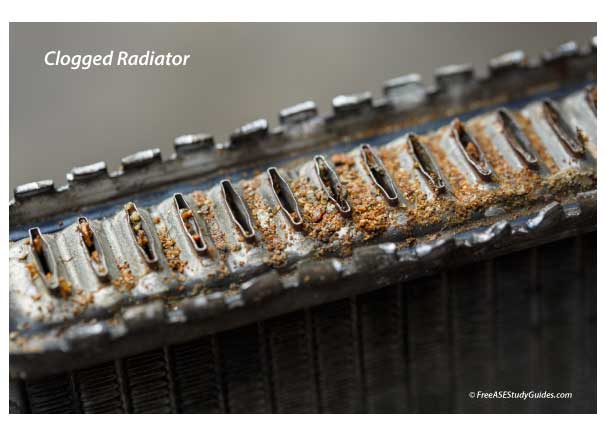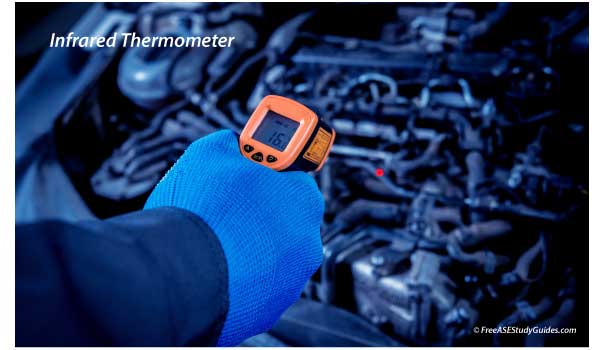Restricted Radiator

External damage and coolant that has broken down and no longer offers rust and corrosion protection results in restricted coolant flow. As the illustration shows, rust can quickly clog the radiator's internal passages, altering the coolant's flow and causing the engine to overheat. Inspect the radiator for external damage and use an infrared thermometer to find internal restrictions.
Infrared Thermometers

Infrared thermometers are helpful when diagnosing restrictions in the engine's cooling system. Coolant flows from the top of the radiator to the bottom. Move the thermometer across the radiator fins, looking for temperature changes. A restriction causes a drop in pressure resulting in a sudden shift in temperature. The same is true for the air conditioning system. A kink in a condenser causes frost to form at the restriction. The frost forms because the change in pressure has resulted in a temperature change.
Radiator Cooling Fans

Cooling fans are driven by the engine's crankshaft or electric motor. They provide airflow through the radiator fins, transferring heat from the engine's coolant to the outside air. The radiator only operates effectively with proper airflow. This airflow is vital, especially while idling or traveling slowly. In addition, today's aerodynamic designs have reduced the size of the radiator grille, demanding even more airflow from electric radiator cooling fans.